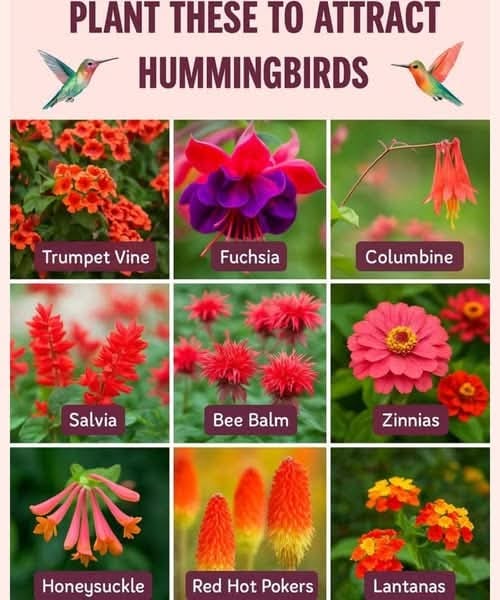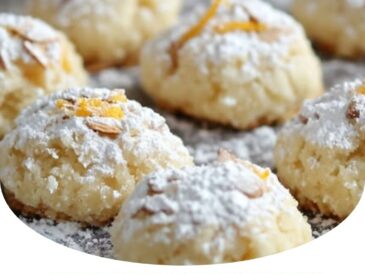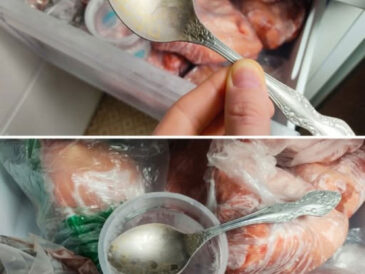These bold, shaggy flowers in red, pink, and purple tones are rich in nectar and perfect for hummingbirds. They also attract butterflies and bees, making them a pollinator powerhouse.
Growing Tips:
- Prefers moist, rich soil.
- Can be susceptible to powdery mildew—space out plants for good airflow.
- Deadhead for extended blooming.
🌼 6. Zinnias (Zinnia spp.)
Hardiness: Grown as annuals
Bloom Time: Summer to fall
Sun: Full sun
Height/Spread: 1–3 feet
Why Hummingbirds Love It:
While known more for attracting butterflies, single-petal zinnias (especially red and pink varieties) offer accessible nectar that hummingbirds will visit.
Growing Tips:
- Direct sow after the last frost or start indoors.
- Cut-and-come-again bloomers: frequent deadheading promotes nonstop flowering.
- Excellent in borders and pollinator gardens.
🍯 7. Honeysuckle (Lonicera spp.)
Hardiness: Zones 4–9
Bloom Time: Spring through early summer (some varieties repeat bloom)
Sun: Full sun to part shade
Height/Spread: Vining to 20+ feet
Why Hummingbirds Love It:
The sweet fragrance and tubular flowers of honeysuckle make it a hummingbird favorite. Red and orange types are especially attractive.
Growing Tips:
- Choose non-invasive native varieties like Lonicera sempervirens (coral honeysuckle).
- Needs support to climb walls, arbors, or trellises.
- Prune annually to control shape and size.
🔥 8. Red Hot Poker (Kniphofia spp.)
Hardiness: Zones 5–9
Bloom Time: Early to midsummer
Sun: Full sun
Height/Spread: 2–5 feet
Why Hummingbirds Love It:
These striking torch-like blooms transition from red to orange to yellow, mimicking a literal “hot poker.” Their tubular shape and bright color are beacons for hummingbirds.
Growing Tips:
- Prefers well-drained soil; avoid winter rot by improving drainage.
- Tolerates drought once established.
- Deadhead spent flowers to promote rebloom.
🌈 9. Lantana (Lantana camara and others)
Hardiness: Zones 8–11 (grown as annuals in colder zones)
Bloom Time: Spring through frost
Sun: Full sun
Height/Spread: 1–6 feet
Why Hummingbirds Love It:
Lantanas produce clusters of multi-colored flowers that change hues as they mature—rich in nectar and highly attractive to hummingbirds and butterflies.
Growing Tips:
- Heat- and drought-tolerant.
- Avoid overwatering—lantana prefers drier soil.
- Can be invasive in some areas; check with your local extension service before planting.
🗓️ Tips for Creating a Seasonal Bloom Calendar
To keep hummingbirds returning all season, plan a succession of blooming plants:
| Season | Recommended Plants |
|---|---|
| Spring | Columbine, Honeysuckle |
| Summer | Bee Balm, Salvia, Zinnias, Trumpet Vine |
| Late Summer to Fall | Fuchsia, Lantana, Red Hot Poker |
Cluster plantings of the same species can help hummingbirds locate nectar sources more easily. Space flowers throughout the yard to encourage exploration and territorial behavior.
🧴 A Note on Pesticides and Bird Safety
Avoid using chemical pesticides, herbicides, or fungicides in your hummingbird garden. These substances can contaminate nectar and harm not only hummingbirds but also the insects they feed on.
Use organic gardening methods:
- Encourage beneficial insects like ladybugs.
- Use companion planting to deter pests naturally.
- Keep your hummingbird feeders clean if supplementing with sugar water (1 part sugar to 4 parts water; no red dye).
🌿 Final Design Tips for a Hummingbird-Friendly Garden
- 🌳 Add height with trellises, hanging baskets, and tall flower spikes to accommodate different feeding levels.
- 🪨 Use natural elements like rocks, shallow water features, and shaded resting areas.
- 💧 Offer water sources like misters or shallow birdbaths for drinking and preening.
- 🌺 Include native plants to support local ecosystems and maximize nectar efficiency.
🌟 Final Thoughts: Invite the Whir of Wings to Your Garden
Creating a hummingbird-friendly garden isn’t just about planting pretty flowers—it’s about inviting a slice of wild beauty into your world. These resilient, fascinating birds will reward your efforts with mesmerizing aerial acrobatics, chirps of delight, and the satisfaction of knowing you’re supporting local pollinators.
So grab your gloves, pick your plants, and let your garden bloom with color, life, and the joyful hum of wings. 🐦💙🌸




